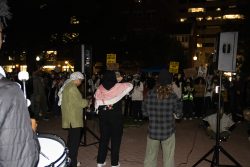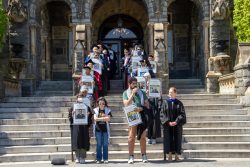The District of Columbia is once again seeking finances for a new piece of crime-fighting technology it claims will revolutionize policing in D.C. But as the Metropolitan Police Department, Mayor Adrian Fenty (D), and the D.C. City Council consider this program—which would put video cameras in all MPD police cars—they should weigh whether they have begun to accept technology as a substitute for real police presence in D.C.’s communities.
If approved by the City Council this week, this program will cost the District from $6,300 to $9,000 per cruiser. But city officials would do better to invest city money in a program that really would actually improve citizen-police relationships: subsidized officer housing.
Among the ranks of D.C. police, an astounding number of officers can’t afford to live in Washington, which prevents them from getting to know the neighborhoods they police. “Ideally, a police officer lives in the community he serves,” Ray Danieli, Assistant Director of Off-Campus Student Life at Georgetown, said. Danieli served as a District Police Officer for 34 years and teaches a class on administrative justice at Northern Virginia Community College. “The more citizens work together with police to solve problems, trust builds up. It’s a very positive, proactive way to fight crime.”
Danieli estimates that fifty or sixty percent of District police officers live outside Washington, D.C. Two city programs called the Homestead Project and Home Again Initiative are already in place to make affordable housing out of the hundreds of vacant properties that dot D.C. But according to Ed Six, a member of Logan Circle’s Advisory Neighborhood Commission public safety committee, these programs have not been working as intended and have put properties in the hands of a few monied developers instead of low- and middle-income families. With the help of MPD, the City Council should reinvent the Home Again Initiative so that it provides affordable housing for the hundreds of police officers who can’t afford housing in the District.
Advocates of flashy technology recognize that D.C. officers need to feel a better sense of community with the areas they patrol. The Police Complaint Board, which suggested putting cameras in cruisers as funds become available, is claiming that placing the cameras would improve relationships between citizens and officers during encounters. However, it is hard to see how citizens will feel come to feel more comfortable with their neighborhood patrols just because their vehicles are equipped with cameras.
Given MPD’s recent tech craze—over the summer they expanded the innovative ShotSpotters, a device which can detect gunfire within two miles, and placed 250 security cameras around the city—and MPD Assistant Chief Patrick Burke’s vocal support for installing the cameras, it is likely that we will see at least a few cameras installed in cruisers in the near future. But because of the extra attention being paid to crime technology, MPD has neglected programs that increase actual police visibility, which are essential to building community trust and confidence in its officers.
ShotSpotter and security cameras have their own uses and they undoubtedly help close cases, but like cruiser cameras, they are poor proxies for real relationships between police officers and the local residents they protect.




